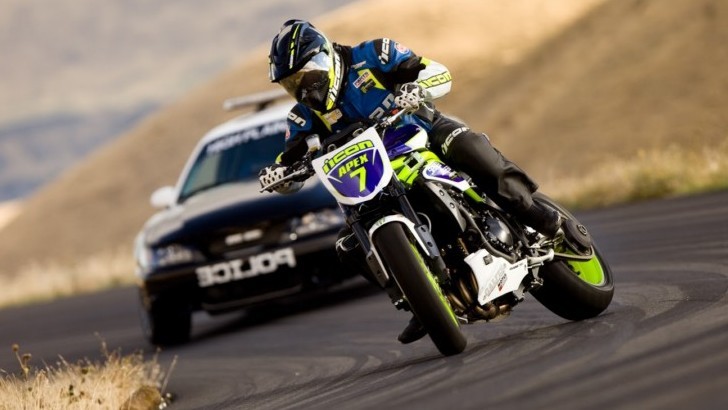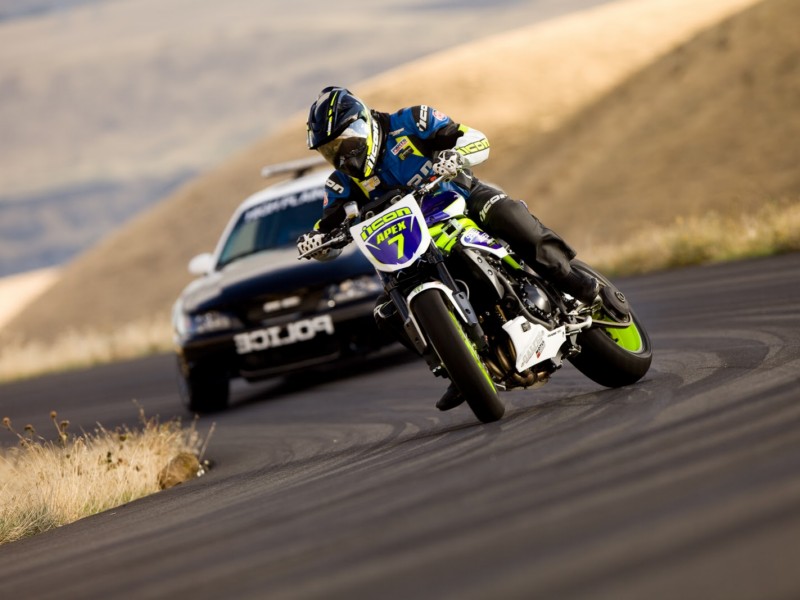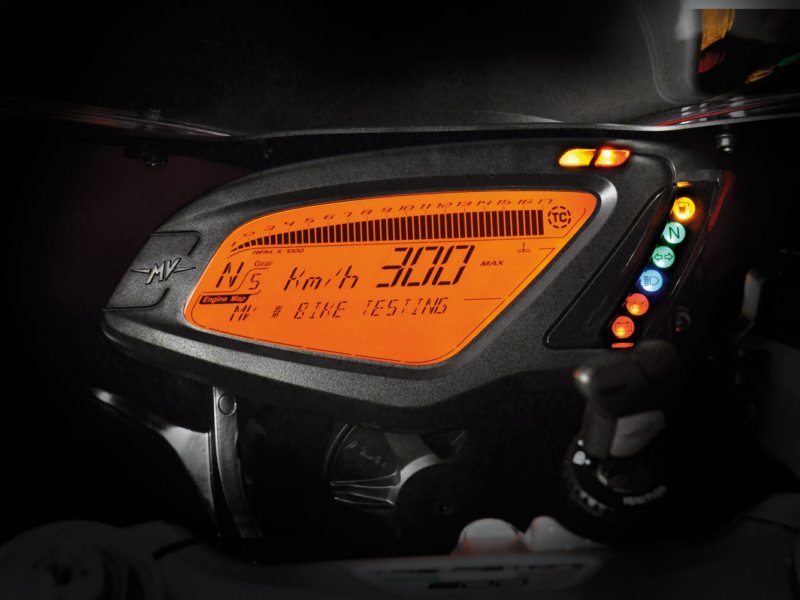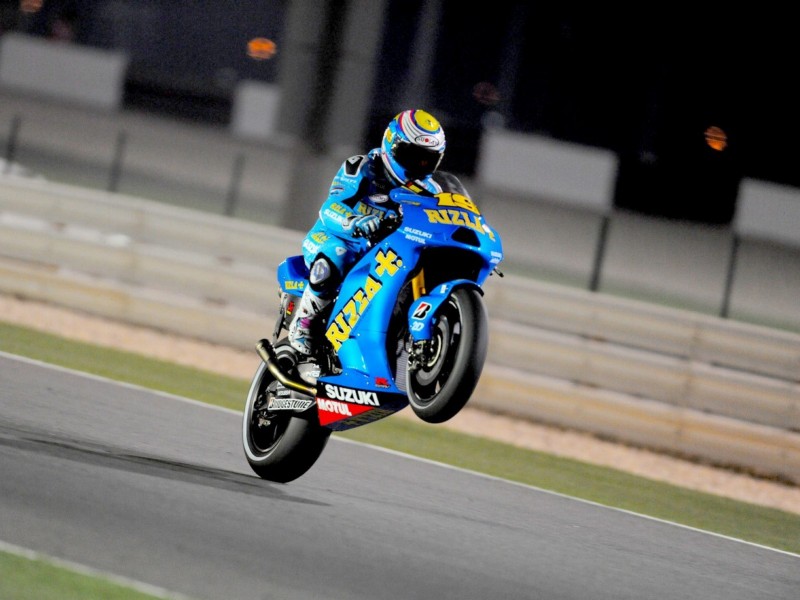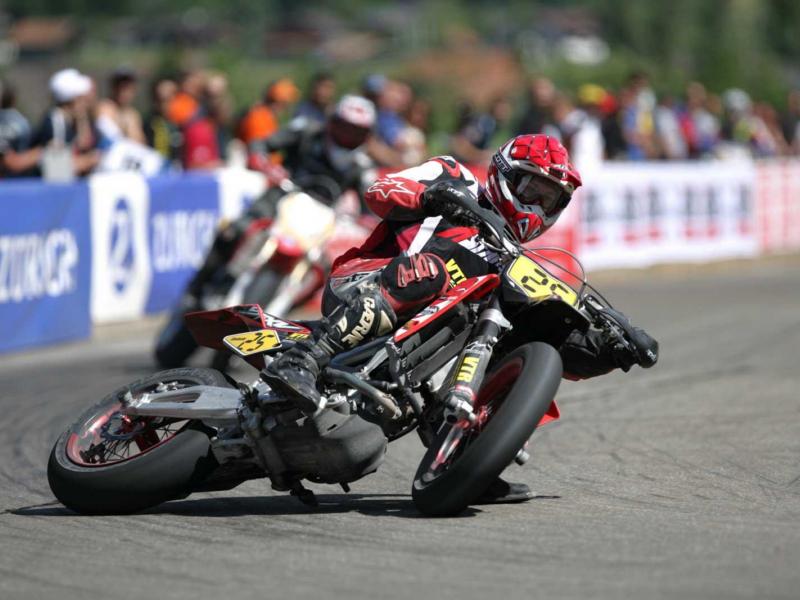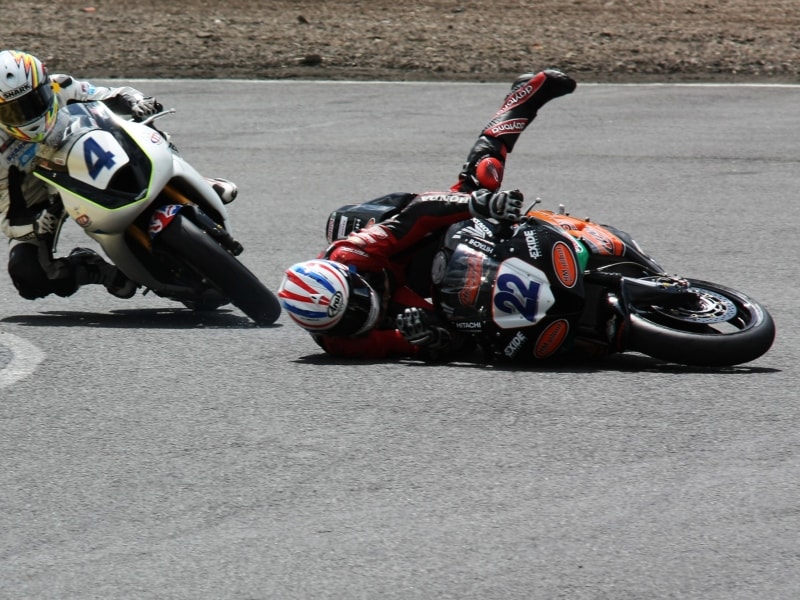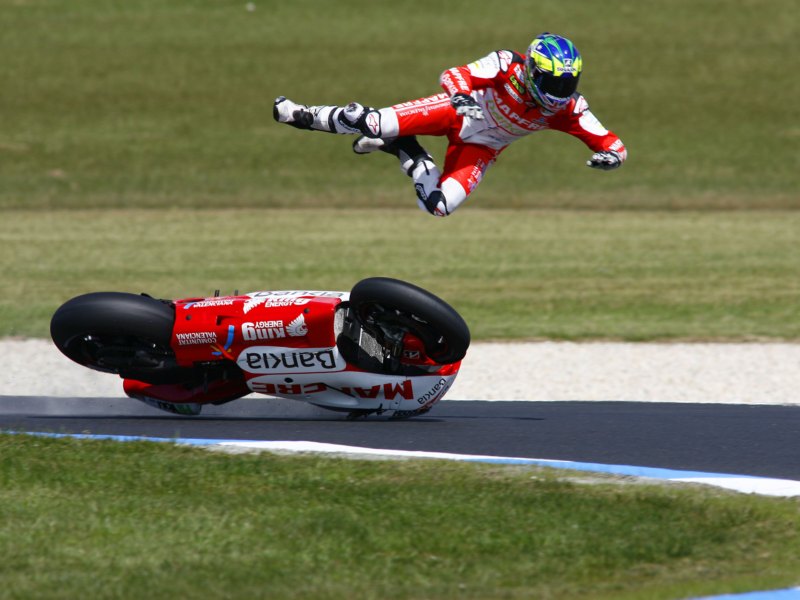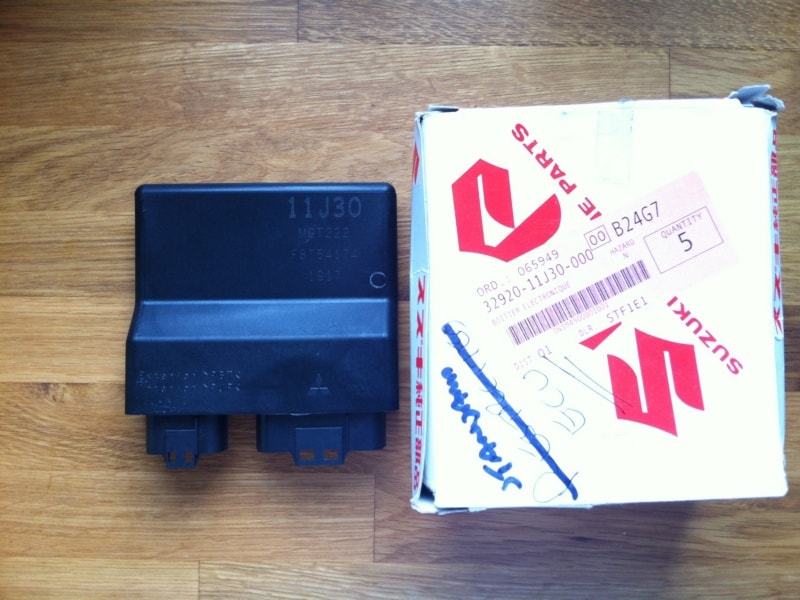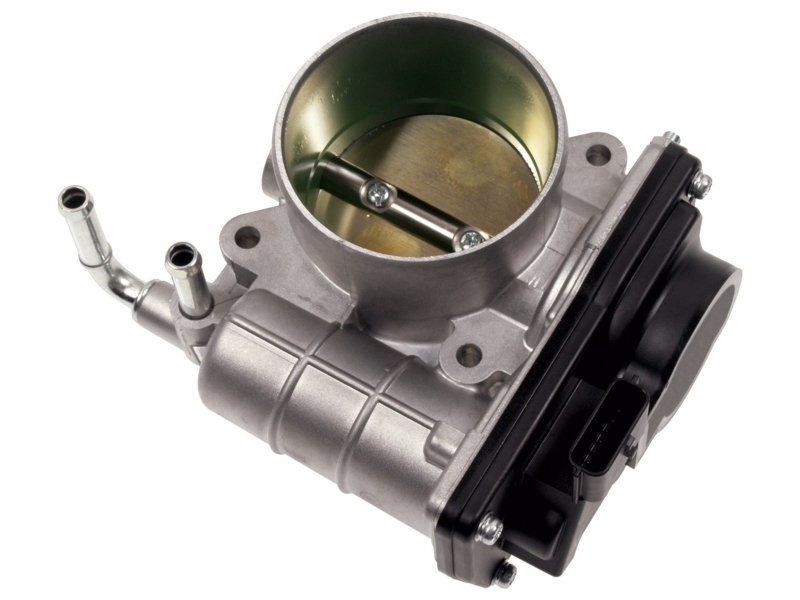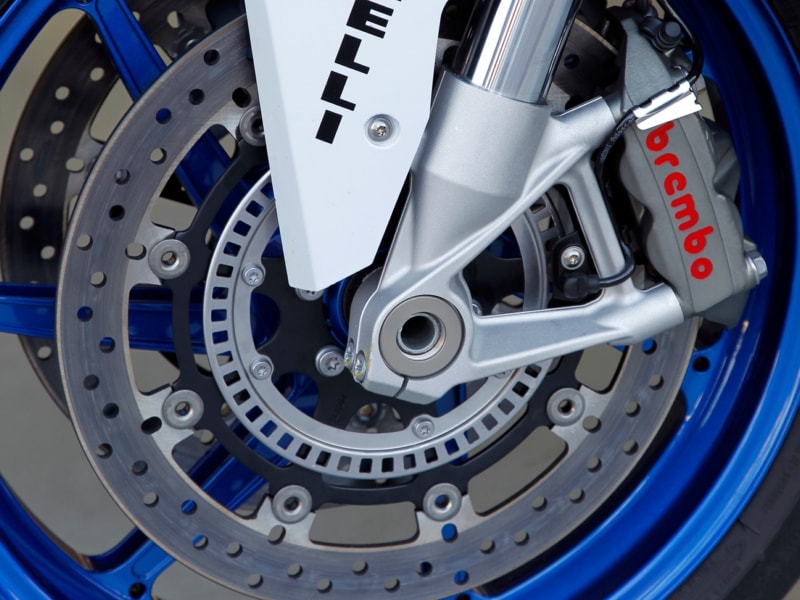Traction Control Systems, generally referred to as TCS, have begun to be a part of our everyday riding lives and are becoming increasingly common in new motorcycles. From sport to adventure bikes, more and more manufacturers are including traction control in the standard equipment levels of their machines. While some, more purist, riders are speaking against traction control systems, it’s definitely a good idea explaining how TCS works and letting you be the judge.
Basic considerations
Traction or grip is one of the key factors to riding a motorcycle, and once it’s gone, so are the bike and rider. Bikes already rely on tiny patches of rubber for ground contact, and the few square inches which link the tires and the road are the only thing that keeps the motorcycles rolling.
However, traction is affected by a lot of factors, and I’d rather say that there are more such factors reducing traction than those favoring it. While heat and the quality of the tires can improve the contact between the ground and the bike, grip can be reduced by lower temperatures, improper tire composition or excessive wear, a jerky/ heavy hand on the throttle, all sorts of debris that can be found on the road, including dead leaves, sand, gravel, oil patches, or water – which is the most common “enemy” of the rider. Still, not limited to the aforementioned aspects, riding a motorcycle safely can be hampered by other countless factors. Problem is, how do we deal with all this?
The only way to avoid dangerous wheel slipping or less dramatic skidding but that could theoretically lead to accidents is to make sure that speed and throttle, leaning angle, and rider position are modified in real time, to compensate for the loss of traction.
While highly-experienced riders can actually sense when a bike’s rear wheel is about to lose grip, such skills demand a lot of training and exercising across vast amounts of time. And even so, the human body is unable to react in a matter of milliseconds – the critical time needed to make such amends to riding.
Traction issues could be synthetized in the difference between the rotational speed of the rear wheel in relation to that of the front wheel. When these speeds are too different, we are already in the loss-of-traction-territory.
The bad thing about all this is that lost traction can result in accidents leading to severe injuries or death. While the low-side crashes are somewhat less dangerous, the high-side ones caused by the loss and sudden regain of traction through a turn are often left with very bad consequences.
Since preventing traction loss is way more effective than taking actions after the grip drifts towards zero, motorcycle engineers have found ways to determine whether a wheel is about to slip even before the event takes place. Using onboard electronics also helps reducing the reaction times, eliminating rider intervention in the process.
However, these forces are sometimes too complex to understand, especially as they influence each other and riding a bike through a turn is in fact the result of multiple forces acting and counter-acting. What may seem natural to a rider can be explained with very complicated physics and the human mind is too weak to operate with such an amount of data in real time. And here’s where electronics come into the game.
When riding through a curve, the centrifugal force is trying to literally throw the bike towards an outer, wider trajectory, and this is why we lean. Leaning shifts the center of gravity outside the bike, while the forces which act upon the machine and its load are spread in a different way and kept in balance.
Even though some of the moves are imperceptible, the bike is never riding ideally smooth: it drifts constantly when turning, and this is because the two wheels rotate in different directions. If you think this is preposterous, take your time to assess the fact that, when going around a corner, the front wheel is turned, while the rear one is in fact riding in a straight line. Add in what you knew on countersteering and things should already be a tad clearer.
Problems appear when the forces that tend to push the bike towards the outside of a turn are no longer meeting enough opposition. This can happen because of the riding surface no longer making good contact with the rubber, or simply because of a rider error. While rear wheel slipping can be kept under control by certain riders and used to their advantage (see supermoto or motocross ones), skidding is usually bad for health.
Too much speed, and the bike will usually under-steer and run wide, or it could drop into a low-side. Reducing the throttle is a good idea, but a sudden drop in the power transmitted to the rear wheel, which should in theory restore traction, is usually followed by a violent transformation of the yaw force into roll force, which causes the bike to buck into a low-side. Some will ask who’s to blame if doing the right thing – reducing the power – causes a crash? It’s the coarse, brutal adjustment!
There-there, do not despair, for there is many a thing electronics can help us with. Basically, the traction control affair leaves us with two options: we either ride in such a way so that the rear wheel slip does not occur, or we must rely on electronics to make up for our riding errors… and yes, most of the times we’re dealing with human error.
Once you got a decent idea on what traction loss means and how this happens, things are way simpler, because engineers and test riders have done all the work to help you keep the rubber side down. The Electronic Control Unit, or ECU, of the bike takes over your machine and is ready to make amends to your riding style.
First of all, the ECU needs information and it will gather such data from various locations. Since we already know that the speed difference between the two wheels is the key to detecting traction loss at an early stage, a bike’s ECU will use the ABS sensors to know how fast the wheels spin. Even more, some manufacturers rely on separate ECUs for the job and use accelerometers and gyroscopes to gather more data on the bike’s behavior and position, being able to make better, more accurate estimations in various scenarios.
Since the ECU already administers fuel delivery and ignition retard, it already knows a lot of things, including engine rpm, power delivery, throttle position, gear, and more, so it has plenty of information to calculate whether everything is running smoothly. And it can, of course, tell whether you’re about to slip. It may be only milliseconds before this actually happens, but this is still thousandfold faster than you’d be able to tell.
}And what’s more important, it can react infinitely faster and more precisely, while all the sensors are being monitored hundreds of times each second, the scenarios are being constantly re-evaluated, and minute changes in the working of the bike can be made almost in real-time. And this brings us to…
In order to cut off power, ECUs have three methods: retarding the ignition, intentionally misfiring one cylinder, and adjusting the throttle, effective with ride-by-wire bikes. Which of these are used and in which order is up to each manufacturer, and details on the technology are usually a well-kept secret.
Kawasaki’s traction control system cuts the fuel injection and creates a misfire in one or more cylinders, and this is most likely the simplest system of them all. Aprilia and BMW use retarding the ignition and adjusting the throttle, while Yamaha uses all three methods. So far, specialists seem to be unable to pinpoint which of these three courses of action is the best, but common sense tells us that a combination is more likely to be a winning solution.
Misfiring offers a rather coarse adjustment to the torque and power deployment to the rear wheel, but it is very fast and effective. The ECU simply cuts the fuel supply to one or more cylinders or skips a spark event. Needless to say that the energy loss is enough to make a difference, but in certain cases a 25% torque drop (in a 4-cylinder engine) might be rather violent. The effect is almost immediate.
Ignition retard. Just like misfiring, ignition retard adjustments are exceedingly quick, but they offer a very fine modulation range. The ignition can be slowed with up to 20 percent before the engine misfires, and the fine adjustments make the power reduction over a brief period of time feel very smooth. Given its limited “authority,” ignition retard obviously cannot be used all alone in TCS.
Throttle adjustments. Throttle adjustments can be made by the ECU in bikes that are equipped with an electronic throttle, often referred to as ride-by-wire. The throttle body is not actuated by means of a cable pulled and pushed by the hand grip; instead, electronic impulses are being used. More or less, it’s like turning the volume of your speakers up or down using a remote or wired control.
Since the ECU has both info and control over the throttle body or bodies, it will be easy for it to make the needed adjustments with high precision. Still, as this involves moving parts inside the bike, it is slow. The good part is that the effect can be modulated between 0 and 100 percent.
Traction Control System is also used in configuring other similar safety-related technologies, such as the Launch Control or Wheelie control. In conjunction with gyroscopes and speed sensors, more complex behaviors can be analyzed and more intricate solutions can be offered to compensate for the temporary loss of grip.
These systems also work closely with the riding modes and injection mappings selected by the rider, and some of them offer enhanced customization in the shape of multiple steps determining how “intrusive” traction control is, or custom settings such as rev or torque limiters. Which manufacturer provides the best TCS is a problem that won’t find an answer anytime soon.
However, if you’re buying a new bike equipped with such systems and are not sure whether you will enjoy it, it’s better to choose one that can also disengage it, or take the bike for a test ride. Or go for a non-TCS bike and learn how to stay out of trouble. The main idea is to enjoy it and be safe.
PS: I never trust such electronics completely and would rather not rely on them solely when I feel like pushing the limits. They have limits, too.
Traction or grip is one of the key factors to riding a motorcycle, and once it’s gone, so are the bike and rider. Bikes already rely on tiny patches of rubber for ground contact, and the few square inches which link the tires and the road are the only thing that keeps the motorcycles rolling.
However, traction is affected by a lot of factors, and I’d rather say that there are more such factors reducing traction than those favoring it. While heat and the quality of the tires can improve the contact between the ground and the bike, grip can be reduced by lower temperatures, improper tire composition or excessive wear, a jerky/ heavy hand on the throttle, all sorts of debris that can be found on the road, including dead leaves, sand, gravel, oil patches, or water – which is the most common “enemy” of the rider. Still, not limited to the aforementioned aspects, riding a motorcycle safely can be hampered by other countless factors. Problem is, how do we deal with all this?
The only way to avoid dangerous wheel slipping or less dramatic skidding but that could theoretically lead to accidents is to make sure that speed and throttle, leaning angle, and rider position are modified in real time, to compensate for the loss of traction.
While highly-experienced riders can actually sense when a bike’s rear wheel is about to lose grip, such skills demand a lot of training and exercising across vast amounts of time. And even so, the human body is unable to react in a matter of milliseconds – the critical time needed to make such amends to riding.
Traction issues could be synthetized in the difference between the rotational speed of the rear wheel in relation to that of the front wheel. When these speeds are too different, we are already in the loss-of-traction-territory.
The bad thing about all this is that lost traction can result in accidents leading to severe injuries or death. While the low-side crashes are somewhat less dangerous, the high-side ones caused by the loss and sudden regain of traction through a turn are often left with very bad consequences.
Since preventing traction loss is way more effective than taking actions after the grip drifts towards zero, motorcycle engineers have found ways to determine whether a wheel is about to slip even before the event takes place. Using onboard electronics also helps reducing the reaction times, eliminating rider intervention in the process.
Understanding wheel slip
Due to a motorcycle’s constructive particularities, the rear wheel is the most likely to lose traction in certain scenarios. All the power generated by the engine must be converted into forward motion by turning the rear wheel and negotiating with all the forces that keep the whole system in balance.However, these forces are sometimes too complex to understand, especially as they influence each other and riding a bike through a turn is in fact the result of multiple forces acting and counter-acting. What may seem natural to a rider can be explained with very complicated physics and the human mind is too weak to operate with such an amount of data in real time. And here’s where electronics come into the game.
When riding through a curve, the centrifugal force is trying to literally throw the bike towards an outer, wider trajectory, and this is why we lean. Leaning shifts the center of gravity outside the bike, while the forces which act upon the machine and its load are spread in a different way and kept in balance.
Even though some of the moves are imperceptible, the bike is never riding ideally smooth: it drifts constantly when turning, and this is because the two wheels rotate in different directions. If you think this is preposterous, take your time to assess the fact that, when going around a corner, the front wheel is turned, while the rear one is in fact riding in a straight line. Add in what you knew on countersteering and things should already be a tad clearer.
Problems appear when the forces that tend to push the bike towards the outside of a turn are no longer meeting enough opposition. This can happen because of the riding surface no longer making good contact with the rubber, or simply because of a rider error. While rear wheel slipping can be kept under control by certain riders and used to their advantage (see supermoto or motocross ones), skidding is usually bad for health.
Too much speed, and the bike will usually under-steer and run wide, or it could drop into a low-side. Reducing the throttle is a good idea, but a sudden drop in the power transmitted to the rear wheel, which should in theory restore traction, is usually followed by a violent transformation of the yaw force into roll force, which causes the bike to buck into a low-side. Some will ask who’s to blame if doing the right thing – reducing the power – causes a crash? It’s the coarse, brutal adjustment!
ECUs, sensors, and their magic
As I mentioned earlier, measuring and relating these forces to each other is a tricky thing and the human brain simply cannot detect the subtle changes in them, let alone acknowledge and interpret them. Even more, a rider’s muscular reactions are way too coarse for the extremely fine adjustments needed to prevent rear wheel slip. And if you want one more blow… some of the measures a traction control system takes are inaccessible to the rider.There-there, do not despair, for there is many a thing electronics can help us with. Basically, the traction control affair leaves us with two options: we either ride in such a way so that the rear wheel slip does not occur, or we must rely on electronics to make up for our riding errors… and yes, most of the times we’re dealing with human error.
Once you got a decent idea on what traction loss means and how this happens, things are way simpler, because engineers and test riders have done all the work to help you keep the rubber side down. The Electronic Control Unit, or ECU, of the bike takes over your machine and is ready to make amends to your riding style.
First of all, the ECU needs information and it will gather such data from various locations. Since we already know that the speed difference between the two wheels is the key to detecting traction loss at an early stage, a bike’s ECU will use the ABS sensors to know how fast the wheels spin. Even more, some manufacturers rely on separate ECUs for the job and use accelerometers and gyroscopes to gather more data on the bike’s behavior and position, being able to make better, more accurate estimations in various scenarios.
Since the ECU already administers fuel delivery and ignition retard, it already knows a lot of things, including engine rpm, power delivery, throttle position, gear, and more, so it has plenty of information to calculate whether everything is running smoothly. And it can, of course, tell whether you’re about to slip. It may be only milliseconds before this actually happens, but this is still thousandfold faster than you’d be able to tell.
}And what’s more important, it can react infinitely faster and more precisely, while all the sensors are being monitored hundreds of times each second, the scenarios are being constantly re-evaluated, and minute changes in the working of the bike can be made almost in real-time. And this brings us to…
How the bike regains traction
We’re already set on the fact that traction can be regained by reducing the amount of power sent to the rear wheel. Ask yourselves how you would do so, and I can bet that almost all of you thought about rolling off the throttle. This is indeed one of the solutions, but it’s not THE solution.In order to cut off power, ECUs have three methods: retarding the ignition, intentionally misfiring one cylinder, and adjusting the throttle, effective with ride-by-wire bikes. Which of these are used and in which order is up to each manufacturer, and details on the technology are usually a well-kept secret.
Kawasaki’s traction control system cuts the fuel injection and creates a misfire in one or more cylinders, and this is most likely the simplest system of them all. Aprilia and BMW use retarding the ignition and adjusting the throttle, while Yamaha uses all three methods. So far, specialists seem to be unable to pinpoint which of these three courses of action is the best, but common sense tells us that a combination is more likely to be a winning solution.
Misfiring offers a rather coarse adjustment to the torque and power deployment to the rear wheel, but it is very fast and effective. The ECU simply cuts the fuel supply to one or more cylinders or skips a spark event. Needless to say that the energy loss is enough to make a difference, but in certain cases a 25% torque drop (in a 4-cylinder engine) might be rather violent. The effect is almost immediate.
Ignition retard. Just like misfiring, ignition retard adjustments are exceedingly quick, but they offer a very fine modulation range. The ignition can be slowed with up to 20 percent before the engine misfires, and the fine adjustments make the power reduction over a brief period of time feel very smooth. Given its limited “authority,” ignition retard obviously cannot be used all alone in TCS.
Throttle adjustments. Throttle adjustments can be made by the ECU in bikes that are equipped with an electronic throttle, often referred to as ride-by-wire. The throttle body is not actuated by means of a cable pulled and pushed by the hand grip; instead, electronic impulses are being used. More or less, it’s like turning the volume of your speakers up or down using a remote or wired control.
Since the ECU has both info and control over the throttle body or bodies, it will be easy for it to make the needed adjustments with high precision. Still, as this involves moving parts inside the bike, it is slow. The good part is that the effect can be modulated between 0 and 100 percent.
Traction Control System is also used in configuring other similar safety-related technologies, such as the Launch Control or Wheelie control. In conjunction with gyroscopes and speed sensors, more complex behaviors can be analyzed and more intricate solutions can be offered to compensate for the temporary loss of grip.
These systems also work closely with the riding modes and injection mappings selected by the rider, and some of them offer enhanced customization in the shape of multiple steps determining how “intrusive” traction control is, or custom settings such as rev or torque limiters. Which manufacturer provides the best TCS is a problem that won’t find an answer anytime soon.
However, if you’re buying a new bike equipped with such systems and are not sure whether you will enjoy it, it’s better to choose one that can also disengage it, or take the bike for a test ride. Or go for a non-TCS bike and learn how to stay out of trouble. The main idea is to enjoy it and be safe.
PS: I never trust such electronics completely and would rather not rely on them solely when I feel like pushing the limits. They have limits, too.
